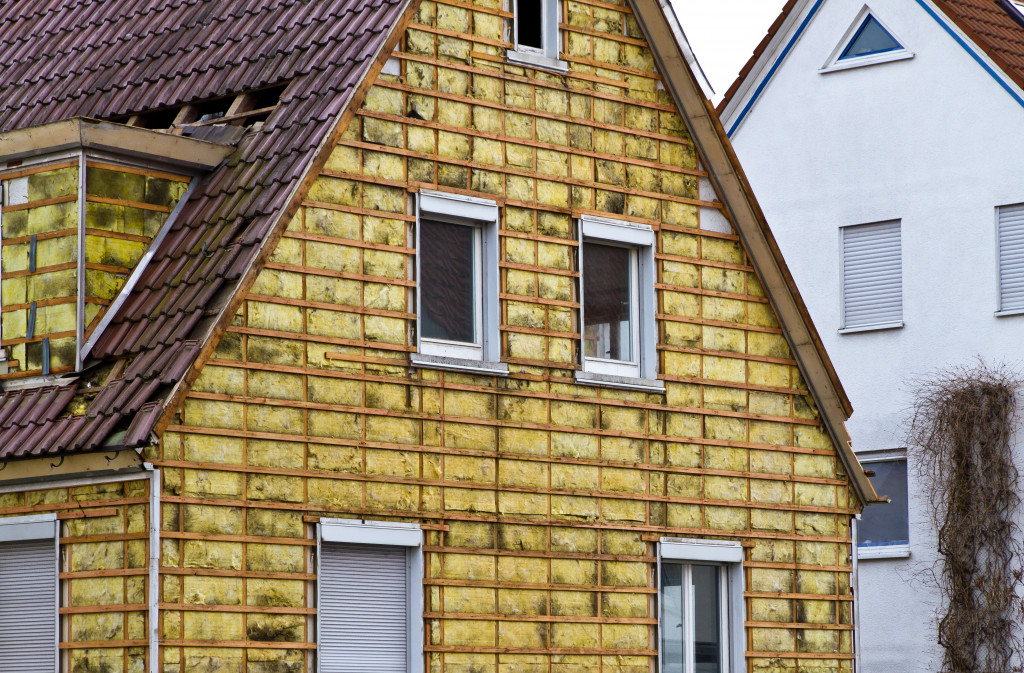- Energy-efficient windows and proper insulation can vastly improve a home’s energy conservation.
- LED lighting and programmable thermostats offer significant energy savings and reduce carbon footprint.
- Eco-friendly insulation options include cellulose, fiberglass, cotton batts, and foam board.
- Solar power systems, though initially costly, contribute to long-term savings and lower reliance on the grid.
If you’re a homeowner with an old home, you’re probably familiar with the challenges of maintaining it while keeping up with modern standards for energy efficiency. But did you know that there are several eco-friendly upgrades you can make in an old home to reduce your carbon footprint and save on energy bills at the same time? This blog will explore a few eco-friendly upgrades that you can make in your home to make it more energy-efficient.
Install Energy-Efficient Windows
If your home still has the original windows, it’s time to think about upgrading to energy-efficient ones. Energy-efficient windows can help keep your home warm in the winter and cool in the summer, reducing your reliance on heating and air conditioning. Look for windows with a low U-factor and solar heat gain coefficient (SHGC) to maximize their energy efficiency.
Add Insulation
Insulating your walls, attic, and crawl spaces is another eco-friendly upgrade that can significantly improve your home’s energy efficiency. Insulation helps to keep your home’s temperature stable, reducing the strain on your heating and cooling equipment and lowering your energy bills. Just make sure you choose the right kind of insulation materials for your home to ensure maximum efficiency. Here are four insulation materials you can choose from:
Cellulose
Cellulose insulation is made from recycled newspapers and other paper products, making it an eco-friendly choice. It’s an excellent choice for walls, floors, ceilings, and crawl spaces.
Fiberglass
Fiberglass insulation is the most common type of insulation used in homes. It’s made from sand and recycled glass and comes in batts or blankets that are easy to install.
Cotton Batts
Cotton batts are made from recycled denim jeans and other cotton fabrics, making them an environmentally-friendly choice. They provide excellent insulation in walls, floors, and ceilings.
Foam Board Insulation
Foam board insulation is also an excellent option for eco-conscious homeowners. This type of insulation is made from recycled plastic and polymer materials, making it an excellent choice for walls and crawl spaces.
Whatever material you choose, make sure you employ the help of a professional insulation service provider to ensure that your insulation is installed correctly and provides the best results. They will also be able to advise you on the best material and insulation techniques for your home.
Upgrade to LED Lighting

LED lighting is a highly energy-efficient lighting option that uses much less power than other types of lighting. LED bulbs are also long-lasting, so you won’t have to replace them as often as other types of bulbs. Upgrade your home’s lighting fixtures to LED bulbs to reduce your carbon footprint and save money on your energy bills. You may even qualify for a rebate from your energy provider when you make the switch!
Install a Programmable Thermostat
A programmable thermostat is an eco-friendly upgrade that allows you to set your home’s temperature to different levels depending on the time of day. For example, you can set your thermostat to lower the temperature when you’re at work and raise it when you’re at home.
This will help to reduce your energy consumption and save you money on your bills. You can even control your thermostat from your smartphone, allowing you to adjust the temperature even when you’re not at home.
Consider Solar Power

If you live in a sunny area, you may want to consider installing a solar power system in your home. Solar panels can help you generate your own energy, reducing your reliance on the grid and lowering your carbon footprint.
While the initial cost of installing solar panels can be high, the long-term savings on your energy bills can make it worth it. You can also take advantage of various government incentives and tax credits to reduce your upfront costs.
There are numerous eco-friendly upgrades that can make your old home more energy-efficient. From installing energy-efficient windows, adding insulation, and upgrading to LED lighting to installing a programmable thermostat and considering solar power, these improvements can significantly reduce your carbon footprint and save you money on your energy bills in the long run.
Remember, every small step towards sustainability can make a big difference for our planet. Don’t be daunted by the initial costs, as the long-term benefits far outweigh the upfront investment. Start your journey to a more eco-friendly home today!

